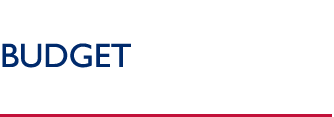 |
 |
|
 |
 |
|
 |
 |
 |
USAID Information:
External Links:
|
|
 |
 |
|
 |
 |
|
Dominican Republic


Please note: All linked documents are in PDF format
| Objective |
SO Number |
FY 2004 |
FY 2005 |
FY 2006 |
| Economic Prosperity and Security |
517-008 |
7,951 |
4,904 |
6,441 |
| Democracy, Governance and Human Rights |
517-009 |
7,144 |
5,439 |
5,639 |
| Family and Workforce Health |
517-010 |
13,166 |
12,849 |
10,548 |
| Total (in thousands of dollars) |
28,261 |
23,192 |
22,628 |
|
The Development Challenge: Newly elected President Leonel Fernandez leads a government with few resources in a country with a history of pervasive corruption. The government inherited a financially collapsed electricity sector and the task of quickly renegotiating a derailed International Monetary Fund (IMF) agreement before a skeptical international community. Before Fernandez assumed power, many Dominicans had lost confidence in their government and experienced significant erosion in incomes; the percentage falling below the poverty level had grown substantially since 2002. USAID's program in the Dominican Republic is designed to assist the country to achieve transformational change that accelerates the country's recovery. USAID programs will strengthen its democratic institutions and rule of law; achieve sustainable economic growth; improve security and combat international crime and drugs, and; improve health and education for the country's citizens.
Soon after taking office, the new administration began taking corrective actions which had an immediate salutary effect on the economy. With continued tight monetary policy and the reopening of IMF negotiations, the peso quickly appreciated and the exchange rate began to stabilize. The country is beginning to recover from the economic crisis that affected it during 2003 and 2004. The year was characterized by severe exchange and interest rate fluctuations. Inflation, after averaging over 100% on an annual basis over the first two months, reduced to an annualized rate of 29%. The country returned to positive growth in the second quarter, due to strong growth in tourism and free trade zone exports, increased remittances, and high pre-election government expenditures. The signing of the Central America Free Trade Agreement (CAFTA) with the United States and five Central American countries strengthens prospects for increased investment, growth, and exports.
The Government of the Dominican Republic has been plagued by a myriad of problems over the past year. Beginning in mid-2003, internal and external debt became a major issue. The former administration's 100% guarantee of deposits in three collapsed banks created an obligation that nearly tripled the debt ratio, an increase of about $11 billion. The former administration sought a standby program from the IMF, but because it was repeatedly unable to meet its financial goals, IMF disbursements were limited to approximately $120 million between October 2003 and February 2004. Because of the lack of an IMF program, almost all other lending from international financial institutions was suspended throughout 2004. The electricity sector lurched from crisis to crisis - price controls, high theft of electricity, and low collections contributed to widespread and sporadic rolling blackouts. Additionally, because of its continuation of subsidies and other policies the government was forced to spend $40 to $50 million monthly to fund the generation and distribution of electricity. USAID, in coordination with the World Bank, worked with the Government to design a National Electricity Sector Revitalization Program to stabilize the electricity sector by the end of 2005 by reducing subsidies and losses, and increasing rates.
The USAID-financed Survey of Democratic Attitudes and Practices found that Dominicans believe that corruption is increasing, as is disenchantment with the functioning of democracy, political parties, rule of law, the justice system, and other national institutions. Only one of three large bank fraud cases has been submitted to the courts. Dominicans are skeptical about whether justice will be served. The survey results highlight the need to strengthen democracy and rule of law in the country in order to restore the confidence of Dominicans in their governmental institutions.
The 2002 Demographic and Health Survey found a HIV/AIDS seroprevalence rate of 1.0% in the adult population, with certain age groups and regions higher than the national average. For example, the rate among residents of bateyes(communities of sugarcane laborers) is 5%. The total fertility rate was 3.0, below the average for Latin America and the Caribbean. However, maternal mortality continues to be high, estimated at 178 deaths per 100,000 live births. The Dominican Republic's health sector reform program, intended to guarantee a basic package of primary care services through health insurance plans, was designed to address the important issue of unequal access to quality care. However, progress has been slow and funding insufficient. The quality of basic education is poor, particularly in rural and marginal urban areas; public investment in education remains relatively low. Additionally, the influx of illegal and transient Haitians adds to the country's poverty burden and further strains the already inadequate health and education services.
USAID's goal is to help the Dominican Republic respond to these challenges in order to place the country back onto a recovery path and to strengthen its institutions - especially those that uphold democracy, the rule of law, and global integration - so that it can enjoy sustainable growth in a democratic setting and become an even stronger bilateral and regional partner of the United States in terms of trade, fighting global crime and terrorism, and cultural exchanges. The U.S. national interests in the Dominican Republic are: to help build economic prosperity and security; combat international crime and drugs; strengthen democracy and human rights; assist in U.S. homeland security, and; improve global health. Some of these goals can best be met by taking an integrated approach through program activities aimed at both the Dominican Republic and Haiti.
The USAID Program: USAID's objectives are to concentrate on increasing and sustaining economic opportunities for all Dominicans, especially the poor; strengthening participatory democracy; and improving the health of vulnerable populations. The economic opportunities portfolio concentrates on institutional changes, policy reform, and public-private partnerships to create jobs, increase trade and investment, achieve a sustainable energy sector and expand electric service, protect the environment, and improve basic education. USAID's democracy program supports the development and enforcement of the rule of law, political and electoral reform, and anticorruption systems. The health portfolio works with the Dominican government to carry out an ambitious health sector reform program, and supports a large HIV/AIDS prevention and services program, as well as tuberculosis detection and treatment, vaccination of children, facilitation of community-managed clean water systems, and maternal mortality reduction.
Other Program Elements: Other USAID activities include: the Presidential Initiative "Centers for Excellence in Teacher Training"; a regional quality coffee project; a regional Parks-in-Peril program; an energy regulatory and power sector technical assistance program for policy reform and improved energy efficiency; disaster mitigation activities with the Office of Foreign Disaster Assistance; labor related trade policy initiatives with the Program in Support of Central American Participation in the Free Trade Area of the Americas; regional municipal and civil society anticorruption activities; a scholarship program with Georgetown University; and activities under three centrally funded public/private alliances - rural electrification cooperatives, basic education activities, and Entra 21, connecting local labor markets with young people interested in information technology careers.
Other Donors: Donor coordination is good. There is a regular exchange of information on issues, funding, and activities. Development assistance to the Dominican Republic in 2003 totaled $356.6 million, with Japan and the United States being the first and second largest bilateral development partners respectively. Bilateral donors and major areas of focus are: Japan (agriculture, education, water, urban infrastructure, and health); Venezuela (petroleum-related financing); Spain (governance, education, environment, health, infrastructure, tourism, and private-sector development); Taiwan (information technology, agriculture, and scholarships); Brazil (hydroelectric, transportation, and potable water supply); Germany (natural resources management, reproductive health, and renewable energy); Canada (agriculture and health) and France (health, agriculture, education, and rule of law). Multilateral donors include the Inter-American Development Bank, the World Bank, the European Union and multiple United Nations agencies. The IMF also disbursed a total of $121 million in 2003 and 2004 to the DR.
Back to Top ^
|


